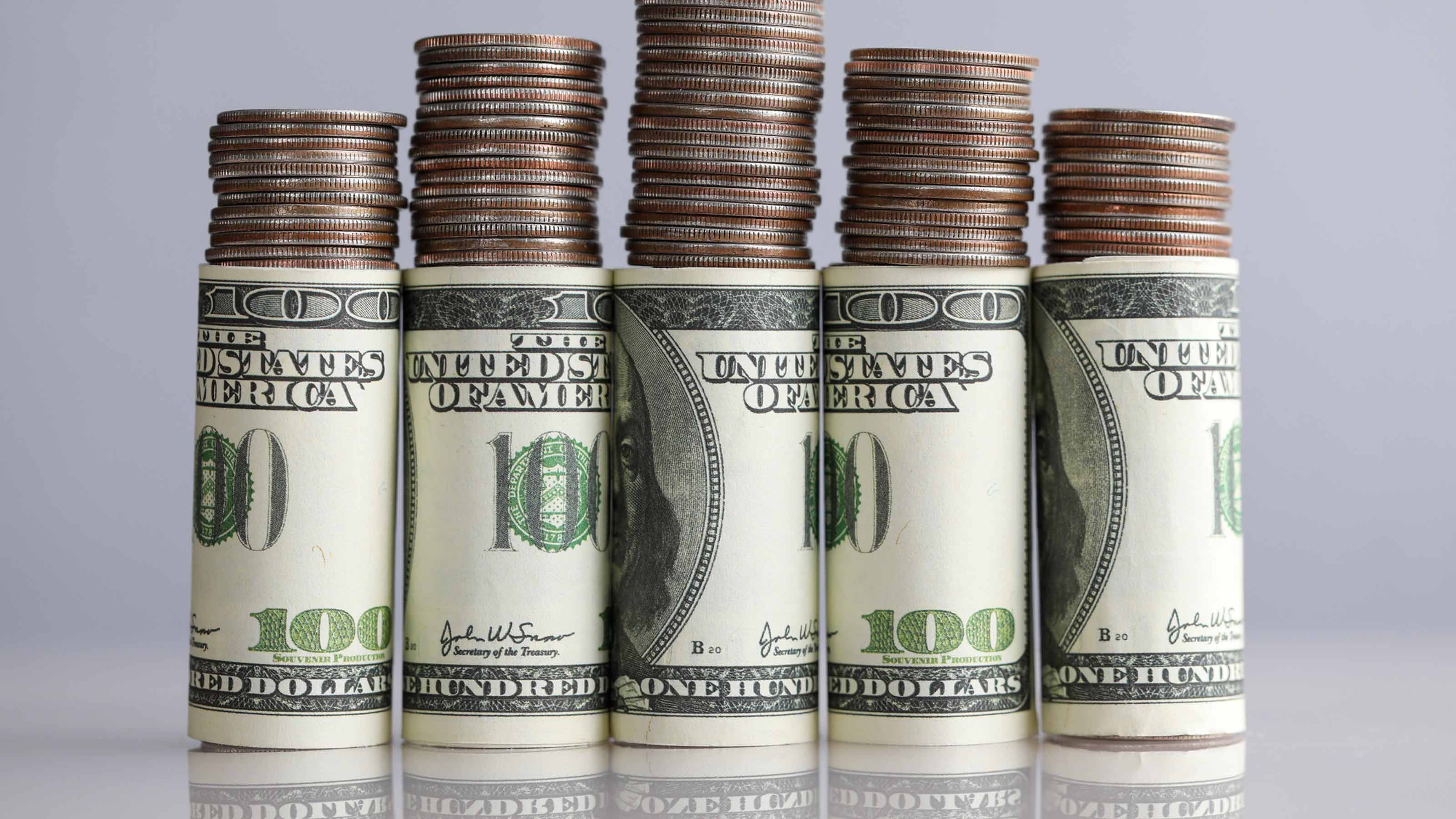Rebuilding Emergency Savings in 2021: Take a Realistic Approach
Saving for a rainy day can be a tall order, especially if you have recently experienced a financial setback. Taking even small steps can help you work toward the larger goal of building up your emergency savings.


You may have heard that you should have three to six months’ worth of essential living expenses saved in case of emergency. It’s sound guidance — but it might be the last thing you want to hear after a year marked by emergencies.
For many of us, 2020 tested our health, safety, bravery and basic financial stability more than any other period in recent memory. If you didn’t already have money saved for emergencies, last year likely wasn’t the time to start stashing it away. And if you did, it may have been a prime opportunity to dip into your reserve.
To that end, a survey from Bankrate found that 35% of Americans have less in their emergency fund now than before the pandemic started, while just 13% have more. Only a quarter have enough saved to cover six months’ worth of expenses, and one-fifth (21%) have no emergency savings at all. Despite these sobering stats, more than half (54%) of respondents said they feel at least somewhat confident in the amount they have socked away. These findings show there’s a disconnect between what people think they need to have saved versus what best practices tell us we need to have saved.
From just $107.88 $24.99 for Kiplinger Personal Finance
Become a smarter, better informed investor. Subscribe from just $107.88 $24.99, plus get up to 4 Special Issues

Sign up for Kiplinger’s Free Newsletters
Profit and prosper with the best of expert advice on investing, taxes, retirement, personal finance and more - straight to your e-mail.
Profit and prosper with the best of expert advice - straight to your e-mail.
To be sure, it can be tough to anticipate how much money we’ll need to cover an emergency, whether it’s unforeseen medical expenses, helping loved ones in need, or replacing income after prolonged unemployment. These scenarios were all too common in 2020 (and continue to be), and many Americans have found themselves coming up short.
But with the benefit of hindsight, many of us may be looking to prepare for the next time we need extra funds. Starting wherever you are today and taking small, practical steps can help you develop sound and effective saving habits. To help you get started, I’ve addressed some of the most common questions about emergency savings below.
How much do I need to have saved?
As noted above, typical guidance suggests you should have three to six months’ of basic living expenses in your emergency fund. Granted, that’s a pretty wide range — so what should you aim for? Everyone’s circumstances are different, but if you have children or ongoing medical expenses, it can be wise to plan for the higher threshold or more.
Not to mention, the events of 2020 showed us that certain industries are particularly hard hit by economic crises — for indeterminate periods of time. If you’re in a job that’s vulnerable to market fluctuations, you may need an even higher target.
For most people, essential living expenses include housing, food, utilities, transportation and health care. Depending on your family, they might also include child care or eldercare costs, or education expenses. If you have debts, they might also include minimum monthly payments to your lenders.
To determine your emergency savings target, take an average of how much you spend on all of your essentials in a given month and multiply it by six (or nine or 12, depending on the number of months you want to prepare for). Don’t just estimate: review your bank and credit card statements to get an accurate picture of your spending. The totals may surprise you. Of course, a loss of income isn’t the only type of financial emergency, so you may want to build in a cushion for home repairs, unforeseen medical events or the sudden need to travel or relocate.
Where do I get the money from?
Meeting your current expenses can be hard enough without the additional pressure of saving for future unknowns. But understand that funding an emergency reserve doesn’t happen overnight; you can set aside smaller amounts over time until you arrive at your target. There are a number of strategies you can apply as you source this money.
First, you can factor saving for this purpose into your monthly budget. This may require pulling back in certain non-essential categories until you’ve met your goal, but remember that these adjustments can be incremental and temporary. For example, with many of us spending more time at home, money previously spent on dining, entertainment, travel and commuting might be steered toward emergency savings instead.
Next, if you’re working, you can dedicate part of your bonus or tax refund to your emergency reserve. While it can be tempting to treat those dollars as “fun money” or use them on short-term expenses, your future self may thank you for allocating some of them to your rainy-day fund.
Another possibility is starting a side business. If your friends are always saying, “You should charge for that!” when commenting on your hobbies and skills, give it some serious consideration. There are many online platforms that could help you earn money for your time and wares.
Lastly, if you have money invested, take a look at your total financial picture to ensure you’ve got an appropriate ratio of liquid cash on hand for emergencies. A financial professional can be a great resource for providing tailored guidance on asset allocation.
You can also mix and match these strategies to make the task of saving more manageable and potentially meet your goal sooner.
Where do I keep it?
Put your rainy-day fund in a liquid account — for example, a high-yield savings account — that can be accessed quickly if an emergency strikes. Importantly, keep this money in its own account, separate from those you use to pay bills and make purchases day to day. This way, you’ll have an easier time preserving it for when you really need it.
What if I need money fast but don’t have enough in my emergency fund?
If you find yourself in the midst of an emergency and haven’t built up sufficient savings, the guidance above may feel like too little, too late. Fortunately, there are short-term sources of funding and relief available, from temporary loan forbearance and debt relief, to lines of credit and new credit cards with zero-interest promotional periods, to employer assistance and unemployment.
The bottom line
Life is unpredictable — but just because you can’t predict the future, it doesn’t mean you can’t plan for the possibility of financial emergencies.
It’s easy to fall into the trap of “status quo bias,” assuming whatever you have stashed away now is sufficient for the future. However, taking a moment to evaluate your current level of savings versus how much you actually need can motivate you to take action and better prepare your finances for future emergencies.
This article has been prepared for informational purposes only. The information in it has been obtained from sources outside of Morgan Stanley. Morgan Stanley makes no guarantees as to the accuracy or completeness of the information from sources outside of Morgan Stanley. It does not provide individually tailored investment advice and has been prepared without regard to the individual financial circumstances and objectives of persons who receive it. The strategies and/or investments discussed in this article may not be appropriate for all investors. Morgan Stanley recommends that investors independently evaluate particular investments and strategies, and encourages investors to seek the advice of a financial adviser. The appropriateness of a particular investment or strategy will depend on an investor’s individual circumstances and objectives.
Asset Allocation does not assure a profit or protect against loss in declining financial markets.
Morgan Stanley Smith Barney LLC (“Morgan Stanley”), its affiliates and Morgan Stanley Financial Advisors or Private Wealth Advisors do not provide tax or legal advice. Individuals should consult their tax adviser for matters involving taxation and tax planning and their attorney for legal matters.
Morgan Stanley is not responsible for the information contained on the third-party websites. Nor do we guarantee their accuracy and completeness.
© 2021 Morgan Stanley Smith Barney LLC. Member SIPC. CRC 3442379 03/21
Profit and prosper with the best of Kiplinger's advice on investing, taxes, retirement, personal finance and much more. Delivered daily. Enter your email in the box and click Sign Me Up.

Krystal Barker Buissereth, CFA®, is a Managing Director and the Head of Financial Wellness for Morgan Stanley at Work. In this role, she is responsible for working with corporate clients and organizations on creating, implementing and managing financial wellness programs that meet the needs of their employees.
-
 Your Guide to Buying Art Online
Your Guide to Buying Art OnlineFrom virtual galleries to social media platforms, the internet offers plenty of places to shop for paintings, sculptures and other artwork without breaking the bank.
-
 Samsung Galaxy S25 Ultra for $4.99 a Month: A Closer Look at Verizon’s Deal
Samsung Galaxy S25 Ultra for $4.99 a Month: A Closer Look at Verizon’s DealVerizon’s aggressive pricing makes Samsung’s top-tier phone tempting, but the real cost depends on your plan and how long you stay.
-
 I'm 59 with $1.7 million saved and lost my job. Should I retire?
I'm 59 with $1.7 million saved and lost my job. Should I retire?We asked professional wealth planners for advice.
-
 A Wealth Adviser Explains: 4 Times I'd Give the Green Light for a Roth Conversion (and 4 Times I'd Say It's a No-Go)
A Wealth Adviser Explains: 4 Times I'd Give the Green Light for a Roth Conversion (and 4 Times I'd Say It's a No-Go)Roth conversions should never be done on a whim — they're a product of careful timing and long-term tax considerations. So how can you tell whether to go ahead?
-
 A 4-Step Anxiety-Reducing Retirement Road Map, From a Financial Adviser
A 4-Step Anxiety-Reducing Retirement Road Map, From a Financial AdviserThis helpful process covers everything from assessing your current finances and risks to implementing and managing your personalized retirement income plan.
-
 The $183,000 RMD Shock: Why Roth Conversions in Your 70s Can Be Risky
The $183,000 RMD Shock: Why Roth Conversions in Your 70s Can Be RiskyConverting retirement funds to a Roth is a smart strategy for many, but the older you are, the less time you have to recover the tax bite from the conversion.
-
 A Financial Pro Breaks Retirement Planning Into 5 Manageable Pieces
A Financial Pro Breaks Retirement Planning Into 5 Manageable PiecesThis retirement plan focuses on five key areas — income generation, tax management, asset withdrawals, planning for big expenses and health care, and legacy.
-
 4 Financial To-Dos to Finish 2025 Strong and Start 2026 on Solid Ground
4 Financial To-Dos to Finish 2025 Strong and Start 2026 on Solid GroundDon't overlook these important year-end check-ins. Missed opportunities and avoidable mistakes could end up costing you if you're not paying attention.
-
 Are You Putting Yourself Last? The Cost Could Be Your Retirement Security
Are You Putting Yourself Last? The Cost Could Be Your Retirement SecurityIf you're part of the sandwich generation, it's critical that you don't let the needs of your aging parents come at the expense of your future.
-
 I'm an Insurance Pro: It's Time to Prepare for Natural Disasters Like They Could Happen to You
I'm an Insurance Pro: It's Time to Prepare for Natural Disasters Like They Could Happen to YouYou can no longer have the mindset that "that won't happen here." Because it absolutely could. As we head into 2026, consider making a disaster plan.
-
 The Future of Philanthropy Is Female: How Women Will Lead a New Era in Charitable Giving
The Future of Philanthropy Is Female: How Women Will Lead a New Era in Charitable GivingWomen will soon be in charge of trillions in charitable capital, through divorce, inheritance and their own investments. Here's how to use your share for good.